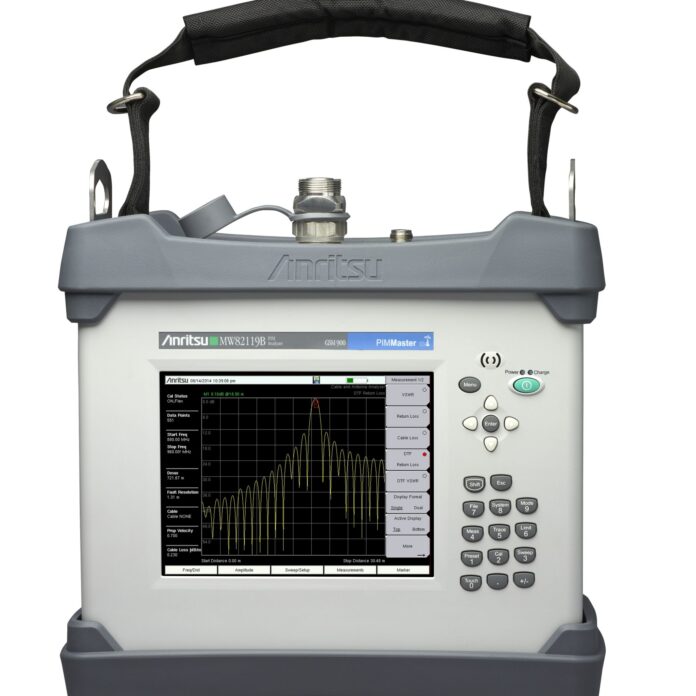Anritsu has combined the two primary types of field testing, sweep testing and testing for passive intermodulation, into one instrument for the first time. The company said the move will allow it to cut down on the number of instruments being used for cell site testing by tower maintenance crews and network installers.
Sweep testing assesses the characteristics of equipment across a range of frequencies, ensuring that antennas are working properly and that there isn’t a high amount of energy loss. PIM testing can involve looking for sources of PIM noise either within the on-site equipment or off-site sources that can cause interference. LTE is particularly sensitive to PIM, and maximizing the strength of the signal results in faster data rates and better quality of experience. Typically those tests are performed using two different pieces of equipment that must be transported to each cell site and hoisted to the top of the tower for use — in Anritsu’s case, its offerings that encompass those tests are its Site Master series and its PIM Master series equipment. PIM testers are also frequency limited, so they come in multiple models that cover discrete frequency ranges. The new series includes nine models covering 700 megahertz to 2600 megahertz LTE bands.
“If I’m doing work on the radio head, I have to hoist multiple instruments. It’s time consuming,” said Tom Bell, product manager for Anritsu. “And those extra transit cases are becoming more and more of a problem for technicians. They already have very crowded vehicles, and if you looked in the back of a tech truck, you’d see they have no more room left.”
Anritsu is implementing the new solution as an option on its PIM Master, so that the MW82119B PIM Master is available with the Site Master option. It is priced so that adding the Site Master option is about half the cost of the standalone Site Master unit, according to Bell.
“This is not a chopped-down Site Master,” Bell said. “This is the full Site Master residing within this unit.”
He added that while field techs who are doing only sweep testing may still prefer the Site Master for its smaller size and lighter weight, “what we’re finding more often than not is that they’re doing PIM and sweep testing, and having to carry … two separate instruments.”
Bell said PIM is a significant concern at small cell installations, and that wireless operators automatically “expect PIM to be an issue” and require PIM testing during site installation. Some carriers, particularly in Canada, require PIM testing of proposed site locations before equipment is even installed. In some cases, he added, Anritsu has seen “very small movements, as much as three feet or a meter, can have a huge impact in the PIM performance.”
Bell said Anritsu designed the new equipment for use inside or outside, and for use at small cell, distributed antenna system and macro sites to determine both on-site and off-site PIM through distance-to-fault information. He added that the company also stepped up the ruggedness of the unit, increasing the drop-testing requirements and gaining an IP54 ingress protection rating that means it will still operate after being exposed to blowing dust or spraying water.
Bell said that the instrument is now available for delivery within two-to-four weeks.

